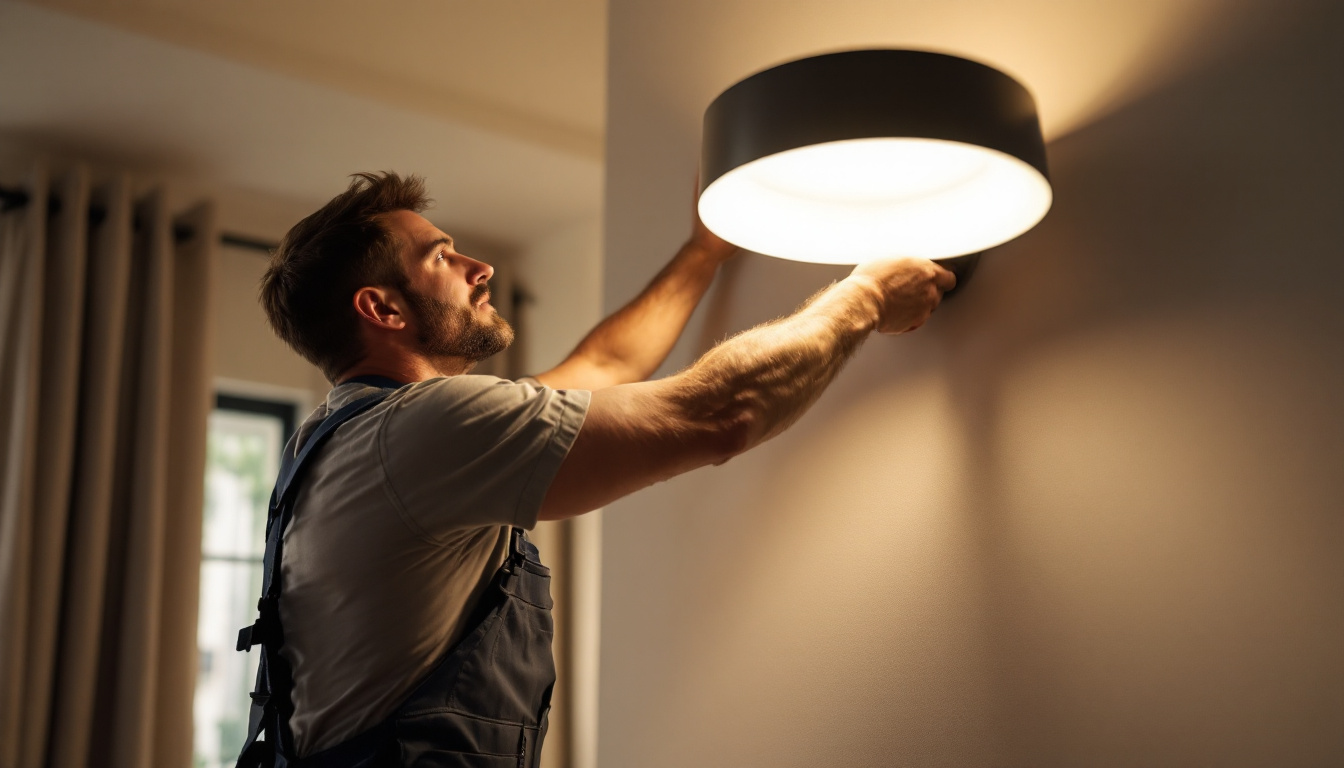
As a lighting contractor, understanding the intricacies of three-way light switches is essential for providing optimal service to clients. These switches allow for greater control over lighting in various spaces, enhancing both functionality and ambiance. This article delves into the key aspects of three-way light switches, offering expert advice to help contractors navigate installation, troubleshooting, and best practices.
Three-way switches are a fundamental component in residential and commercial lighting systems. They enable the control of a single light fixture from two different locations, making them ideal for hallways, staircases, and large rooms. The basic operation involves two switches that work in tandem, allowing users to turn the light on or off from either switch. This functionality not only enhances convenience but also improves safety by ensuring that lights can be easily accessed from multiple points, especially in areas where visibility is crucial.
Each three-way switch features three terminals: one common terminal and two traveler terminals. The common terminal connects to the power source or the light fixture, while the traveler terminals connect to the other switch. Understanding these components is crucial for proper installation and functionality. Additionally, the physical layout of the switches plays a significant role in their operation; for instance, the orientation of the switches can affect how they interact with the electrical system, making it essential for installers to pay attention to the details.
When installing three-way switches, it is vital to ensure that the wiring is correctly configured. Incorrect wiring can lead to malfunctioning switches or even electrical hazards. Familiarity with the wiring diagrams is essential for any lighting contractor looking to streamline the installation process. Moreover, using the right tools and safety equipment, such as voltage testers and insulated screwdrivers, can help prevent accidents during installation and ensure that the switches operate as intended.
There are primarily two types of three-way switches: mechanical and smart switches. Mechanical switches are the traditional option, relying on physical movement to complete the circuit. They are straightforward to install and maintain, making them a popular choice for many contractors. These switches are often favored for their reliability and simplicity, as they do not depend on external power sources or complex configurations, which can sometimes lead to issues in smart systems.
On the other hand, smart three-way switches integrate with home automation systems, allowing for remote control and scheduling via smartphones or voice commands. While they offer enhanced convenience, they may require additional wiring and configuration, which contractors should be prepared to address. Furthermore, smart switches often come with features such as dimming capabilities, energy monitoring, and integration with other smart home devices, providing users with a more customized lighting experience. As technology continues to evolve, the popularity of smart switches is likely to grow, making it essential for contractors to stay updated on the latest advancements in this area.
Proper installation of three-way switches is critical for ensuring safety and functionality. Following best practices can help lighting contractors avoid common pitfalls and deliver quality work to clients.
When wiring three-way switches, it is essential to follow the correct color coding for the wires. Typically, a black wire is used for the common terminal, while red and white wires serve as travelers. Ensuring that these colors are consistently used throughout the installation can prevent confusion and errors.
Additionally, using wire nuts to secure connections is recommended. This method not only provides a secure connection but also reduces the risk of electrical shorts. Contractors should also ensure that all connections are properly insulated to prevent any potential safety hazards. It is also advisable to use high-quality materials that meet local electrical codes, as this can significantly enhance the longevity and reliability of the installation. Furthermore, labeling wires during the installation process can save time and effort during troubleshooting or future modifications, making it easier for anyone who may work on the system later.
After installation, testing the circuit is a crucial step that should not be overlooked. Utilizing a multimeter can help verify that the switches are functioning correctly and that there are no short circuits. This testing phase is vital for ensuring client satisfaction and safety.
Moreover, educating clients on how to operate their new three-way switches can enhance their experience. Providing a brief tutorial on how the switches work and what to do in case of issues can foster trust and confidence in the contractor’s expertise. Additionally, offering a simple troubleshooting guide can empower clients to address minor issues independently, reducing the likelihood of unnecessary service calls. This proactive approach not only improves customer relations but also positions the contractor as a knowledgeable and reliable resource in the eyes of the client, potentially leading to future referrals and projects.
Even with careful installation, issues can arise with three-way switches. Understanding common problems and their solutions can save contractors time and enhance their reputation for reliability.
One of the most common issues faced is when the switches do not operate as expected. This can be due to a variety of reasons, including loose connections or faulty switches. A thorough inspection of all wiring and connections is the first step in diagnosing the problem.
If the wiring appears intact, the switches themselves may be faulty. In such cases, replacing the switches with new ones is often the best course of action. Contractors should keep a stock of common switch types to facilitate quick replacements during service calls.
In addition to checking the switches and wiring, it’s also important to verify that the circuit breaker is functioning correctly. Sometimes, a tripped breaker can lead to confusion, making it seem like the switches are at fault. A quick reset of the breaker can often resolve the issue, allowing the contractor to move on to more complex problems without unnecessary delays. Furthermore, educating clients on the importance of regular maintenance and inspection of their electrical systems can help prevent such issues from arising in the first place.
Intermittent lighting can be frustrating for clients and may indicate a problem with the wiring or the switches. This issue often arises from loose connections or damaged wires. Contractors should check all connections and replace any damaged wiring to resolve the issue.
Additionally, ensuring that the switches are compatible with the light fixtures can prevent such problems. Using the right wattage and type of bulbs is crucial for maintaining a stable lighting system.
Moreover, it’s essential to consider the age of the electrical system when diagnosing intermittent lighting issues. Older homes may have outdated wiring that is more prone to wear and tear, leading to flickering lights. In such cases, contractors might recommend an electrical upgrade to improve safety and reliability. This not only enhances the performance of the lighting but also adds value to the property. Clients will appreciate the proactive approach, knowing that their electrical systems are up to code and functioning efficiently.
Providing expert advice and exceptional service can significantly enhance the client experience. Lighting contractors should focus on building relationships with clients through effective communication and education.
Each client has unique needs and preferences when it comes to lighting. By offering custom solutions, contractors can demonstrate their expertise and commitment to client satisfaction. This may involve recommending specific types of three-way switches or suggesting alternative lighting options that align with the client’s vision.
Taking the time to understand a client’s lifestyle and preferences can lead to tailored solutions that not only meet their needs but also exceed their expectations. This personalized approach can foster long-term relationships and encourage referrals.
Following up with clients after installation can enhance their experience and build trust. A simple phone call or email to check on their satisfaction with the work can go a long way. It shows that the contractor values their business and is committed to providing ongoing support.
Additionally, offering maintenance services or periodic check-ups can further solidify the contractor’s reputation as a reliable professional. Clients are more likely to return for future projects if they feel supported and valued.
The lighting industry is constantly evolving, with new technologies and trends emerging regularly. Staying informed about these changes is crucial for lighting contractors who wish to remain competitive and offer the best solutions to their clients.
Smart lighting systems are becoming increasingly popular, and understanding how to integrate these systems with traditional three-way switches can set contractors apart from the competition. Familiarizing oneself with the latest smart technologies and their installation requirements can enhance service offerings.
Additionally, energy-efficient lighting solutions, such as LED fixtures, are gaining traction. Contractors should be knowledgeable about the benefits of these options and how they can be incorporated into existing systems. This knowledge not only helps in making informed recommendations but also positions contractors as industry experts.
Participating in workshops, seminars, and online courses can help contractors stay updated on best practices and new technologies. Many organizations offer certification programs that can enhance a contractor’s credentials and expand their skill set.
Networking with other professionals in the industry can also provide valuable insights and opportunities for collaboration. Engaging with peers can lead to the exchange of ideas and techniques that can improve service delivery and efficiency.
Three-way light switches are an essential component of modern lighting systems, and understanding their intricacies is vital for lighting contractors. By mastering installation techniques, troubleshooting common issues, and enhancing client experiences, contractors can establish themselves as trusted professionals in the industry.
Staying informed about emerging technologies and industry trends will further empower contractors to provide innovative solutions that meet the evolving needs of their clients. With a commitment to excellence and a focus on customer satisfaction, lighting contractors can thrive in a competitive market.
Ready to elevate your lighting projects with high-quality three-way switches? Look no further than LumenWholesale, where we provide contractors with spec-grade lighting products at unbeatable wholesale prices. Our selection is designed to meet the highest industry standards, ensuring you have access to reliable and high-performance lighting solutions for every installation. Plus, with free shipping on bulk orders, you can stock up on all your lighting needs without worrying about hidden fees or compromises. Don’t let inflated markups dim your project’s potential. Choose LumenWholesale for the perfect blend of quality, affordability, and convenience. Wholesale Lighting at the Best Value is just a click away!

Discover how large wall light fixtures can streamline projects for lighting contractors.

Discover expert insights on the T5 Ho Light Fixture with our comprehensive guide tailored for lighting contractors.

Discover the transformative power of 5000K light in enhancing lighting installation projects.

Discover the key differences between T8 and T12 fluorescent tubes and why these distinctions matter for lighting contractors.